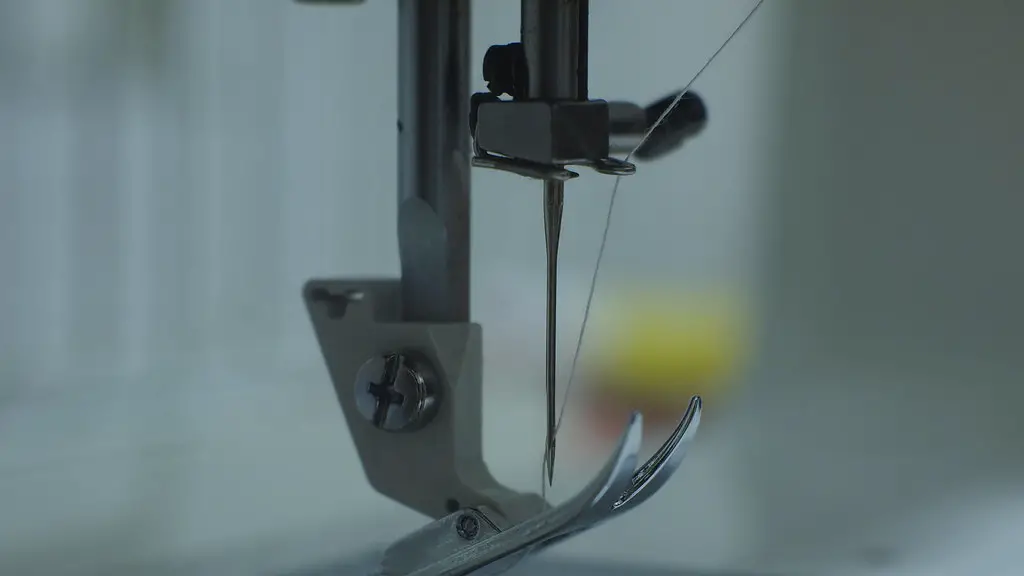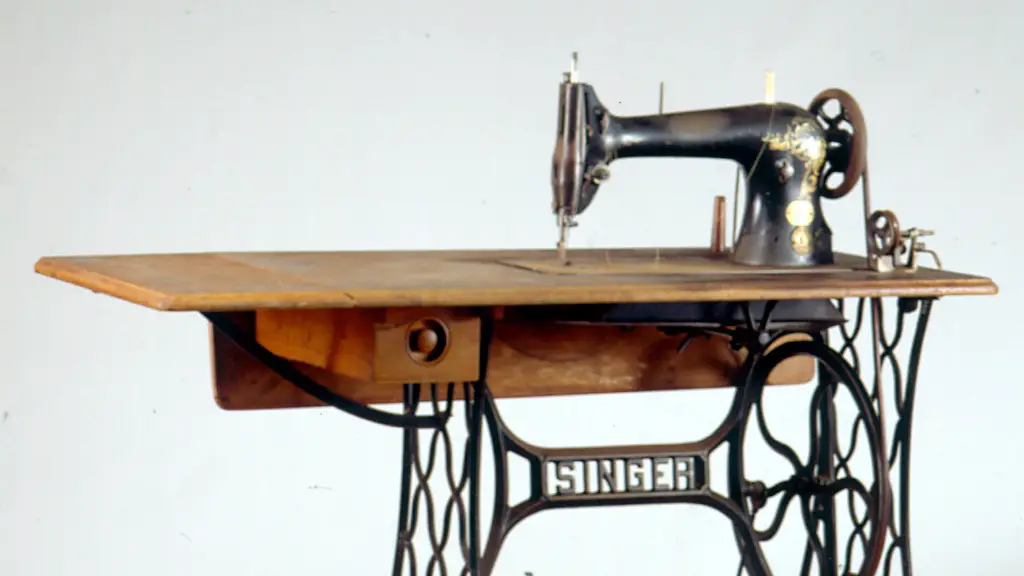Sewing your own clothes can be a fun and rewarding experience, but it can also be a bit daunting if you’ve never done it before. One of the most important things to know when sewing your own clothes is how to draft a sewing pattern.
Drafting a sewing pattern is essentially creating a template for the clothes you want to make. This can be done by either altering an existing pattern or by drafting one from scratch. Either way, it’s important to get the measurements of the garment you want to make right, as well as the placement of any features like pockets or buttons.
Once you have your pattern drafted, you can then start cutting out your fabric and sewing your garment together. With a little practice, you’ll be able to create custom clothing that fits you perfectly and is exactly what you want to wear.
When it comes to drafting a sewing pattern, there are a few things you need to take into account. First, you need to know the measurements of the person or object you are sewing for. Second, you need to decide what kind of pattern you want to create. Lastly, you need to transfer your pattern onto paper or fabric.
What are the 4 steps in drafting pattern?
There are four steps in pattern drafting: measurement, detailing, material selection, and paper drafting.
1. Measurement: Take the proper measurements to build a pattern.
2. Detailing: Create different collar types, specifically for T-shirts.
3. Materials: Select materials for a desired fit.
4. Paper Drafting: Draft the paper pattern.
1. Start with good measurements: This is the most important step in pattern drafting. Make sure you take accurate measurements of your body and the garment you want to make.
2. Familiarize yourself with the tools of the trade: Pattern drafting requires some specific tools, such as a ruler, a curves tool, and a set square. Familiarize yourself with these tools before you start drafting your pattern.
3. Work on a large surface: You’ll need a large surface to draft your pattern, such as a large table or a piece of poster board.
4. Understand how different materials behave: Different fabrics behave differently when they’re cut and sewn. Some fabrics stretch, while others don’t. Understanding how different fabrics behave will help you draft a better-fitting pattern.
5. Don’t forget seam allowance! Seam allowance is the space between the edge of the fabric and the stitching line. Make sure to leave enough seam allowance when you’re drafting your pattern.
6. Mark all the important points: When you’re drafting a pattern, it’s important to mark all the important points, such as the center front, the side seams, and the hemline.
7. Learn from the pros
Is pattern drafting hard
Fashion design is a challenging and technical process, requiring a high degree of skill to draft a successful pattern. Certain aptitudes and ambitions are necessary within the fashion designer to create a well-crafted garment.
Pattern drafting is an important process in the creation of clothing and other items. This process involves taking measurements from a person, form, or model, in order to create a foundation, or pattern, which will be used as the basis for the design. There are several steps involved in pattern drafting, including measurement, pattern drawing, and pattern set creation. Each of these steps is important in order to create a well-fitting and stylish garment or item.
Is pattern drafting easy?
Pattern making can feel quite hard for some people, as it is quite a technical skill. However, anyone can learn it with some practice. You will need to be able to do some basic math in order to make patterns, either in your head, on paper, or using a calculator. With some patience and practice, you will be able to master this skill.
When you sit down to write, it’s important to have a plan. You can’t just start writing without any idea of what you want to say. That’s why the first step in the writing process is prewriting. This is when you decide what you want to write about and do the research you need to do to write your paper.
After you’ve done your prewriting, it’s time to start planning and outlining your paper. This is when you decide what order you’re going to write your paper in. You need to have a good structure for your paper so that it flows well and is easy to read.
Once you have your outline, you can start writing your first draft. This is when you get all of your ideas down on paper. Don’t worry about making it perfect at this stage, just get everything down.
After you’ve written your first draft, it’s time to start redrafting and revising. This is when you start to polish your paper and make it the best it can be. You’ll also need to make sure that all of your ideas are clearly stated and that your paper flows well.
Finally, once you’re happy with your paper, it’s time to edit and proofread
What are 4 important tools needed to draft a pattern?
The following drafting equipment is used: L-scale, Leg shaper, Tailor’s art curve, Compass, Drafting table, Milton cloth, Brush.
Quarter scales are a great way to learn basic dressmaking techniques. By using quarter scales, you can trace and manipulate the pattern without wasting a lot of paper. Plus, Quarter scale patterns are much easier to handle than full-scale patterns. To get started, print out a quarter-scale pattern (basic dress and basic pant) and start practicing!
Which pattern designing method is fastest and most efficient
The flat pattern method is the most efficient method for developing patterns for mass-produced garments. This method involves modifying the basic block pattern to create new and varied styles. This method helps to maintain the consistency of size and fit of garments across different production runs.
Sewing is a great way to relieved stress and to create something unique and beautiful. But it can be difficult to know where to start, especially if you’re a beginner. That’s why we’ve put together a list of the top five sewing patterns for beginners, to help you get started on your sewing journey!
1. Tilly and the Buttons – Cleo
This pattern is great for beginners as it is easy to follow and has clear instructions. The Cleo is a great pattern for sewing a classic shirt or blouse.
2. Grainline Studios – Scout Tee
This is a great pattern for those who want to sew a quick and simple project. The Scout Tee is a timeless pattern that is perfect for beginners.
3. Leisl & Co – Everyday Skirt
This pattern is ideal for beginners as it is well-drafted and easy to sew. The Everyday Skirt is a versatile pattern that can be dressy or casual, depending on the fabric you use.
4. Tilly And The Buttons – Coco
This is a great pattern for beginners who want to sew a garment with some structure. The Coco is a beautiful pattern that can be sewn in a variety
What is the easiest design pattern?
The singleton design pattern is a software engineering design pattern that is used to restrict instantiation of a class to only one object. This is useful in situations where only one instance of a class is needed, such as in a database or configuration class. The singleton design pattern is also used as a way to improve performance by reducing the number of objects that need to be created.
The median salary for a Pattern Maker in the United States is $50,561 per year. The average salary is $46,674 per year. These numbers represent the median, which is the midpoint of the ranges from our proprietary Total Pay Estimate model and based on salaries collected from our users.
What are the 3 types of pattern
There are three types of patterns:
Shape patterns are created by repeating a particular shape.
Letter patterns are created by repeating a particular letter.
Number patterns are created by repeating a particular number.
Pattern drawing is the first step in the pattern making process. It involves creating a wire frame that outlines the length and width of the pattern piece. This frame is then gradually developed into one of the pieces of the pattern set. This process can be done either by the use of manual or electronic pattern making tools.
Which software is best for pattern design?
If you want to get into surface pattern design, you will need to be proficient in the Adobe Creative Suite. Illustrator and Photoshop are the two most commonly used programs for creating digital designs. InDesign is also great for creating mood boards. Adobe Acrobat is great for viewing and editing PDF documents.
Drafting is a critical step in the writing process. By creating a draft, you are able to organize your thoughts and communicate them effectively to your audience. There are a few key rules to keep in mind when drafting your work:
1. Make sure to plan out your design before beginning the draft. This will help you to stay on track and avoid omitting or adding any information at random.
2. Negative statements should be avoided whenever possible. Focus on communicating the positive aspects of your message.
3. Use technical language when appropriate. This will ensure that your readers are able to understand the information you are sharing.
Warp Up
There is no one-size-fits-all answer to this question, as the best way to draft a sewing pattern will vary depending on the garment you are trying to create. However, there are some general tips you can follow to ensure your pattern is as accurate as possible:
1. Use measurements that are specific to your body. This means taking your own measurements, or finding a friend or family member who is willing to do so.
2. Draft your pattern on paper first. This will help you visualize the finished garment and make any necessary adjustments before you cut into your fabric.
3. When cutting your fabric, be sure to use sharp scissors and follow the lines of your pattern as closely as possible.
4. Once your garment is assembled, try it on and make any final adjustments to the fit. This is especially important if you are creating a fitted garment such as a dress or blouse.
By following these tips, you can be sure that your sewing patterns will be accurate and will result in a garment that looks and fits great.
There are a few key things to keep in mind when drafting a sewing pattern: first, decide what you want to make and take accurate measurements. Next, transfer your measurements onto paper, either by freehand or using a gridded pattern making ruler. Once you have your basic pattern drafted, you can then adjust it to your desired fit and style. And finally, don’t forget to add seam allowances! With these steps in mind, you’ll be well on your way to creating your own custom sewing patterns.





